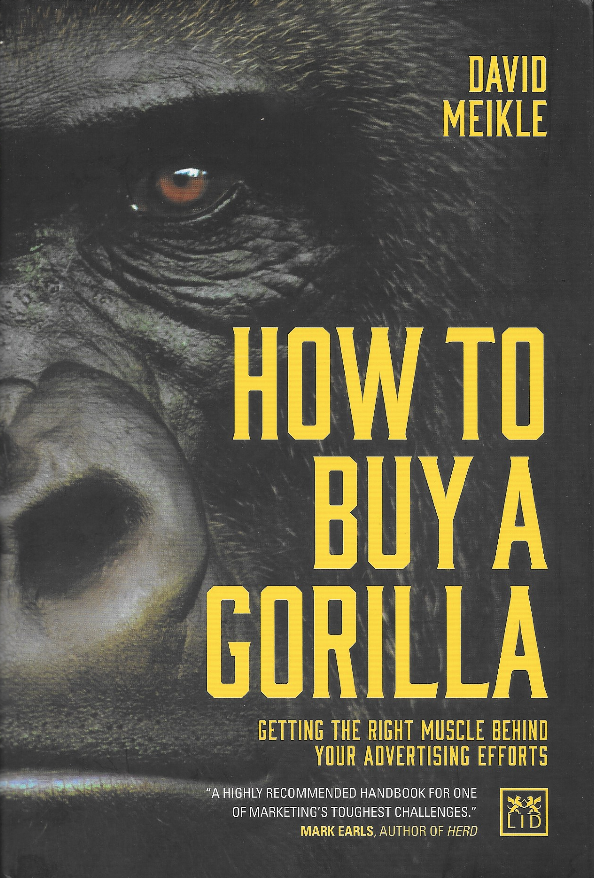The one sentence summary
Marketers, brands and agencies can resolve their differences and create greater value for brands by thinking harder about what is truly required.
Want to buy the book? CLICK HERE
WHAT THE BOOK SAYS

- This is a highly specific book about how brands can get the best from their communications agencies. It looks at the common flaws in relationships between marketers, their procurement colleagues and their agencies.
- It then offers a set of principles that all the parties can use to resolve their differences and create greater value for advertisers.
- Different brands need different kinds of advertising. This in turn requires different agency talent, which responds to the nature (the brief) and the nurture (the relationship). Nurture is made up of how you work and behave together, and how much and the way the agency is paid.
- The analogy of a Monkey House is used, in which the different types of advertising are:
- The gorilla – a ubiquitous, breakthrough, transformative idea that stops you in your tracks, usually with higher investment.
- The spider monkey – distinctive and extraordinary because media investment is lower.
- The orangutan – a slower, steadier, more predictable, but nevertheless powerful campaign.
- Marketing, procurement and agencies have little shared interest, so their relationship is strained. It’s like a Mexican standoff in which low trust leads to low speed and high cost. They need a common goal.
- A series of matrices compare client attractiveness to the agency, client financial value, outputs, talent and efficiency. The quadrants are:
- Develop/showcase: invest beyond client’s means for growth to become core. The agency state here will be arrogance or genius. Vanity or innovation follows. This is often highly inefficient at the agency’s cost.
- Core: zealously defend, over-service, showcase creative work. Here the agency is in flow, producing excellent work, highly efficiently.
- Bread and butter: monitor and maintain satisfaction, ensure financial return. This is simply compliance, leading to mediocrity or conservatism, often at the client’s cost.
- Nuisance: divest, fire if possible or provide minimum service if not. Here the agency is disengaged, and probably producing rubbish.
WHAT’S GOOD ABOUT IT
- Ideas of best practice are misnomers; often they’re not appropriate to the business problems we need to solve.
- “If you think it’s expensive to hire a professional to do the job, wait until you hire an amateur.” Red Adair, oil well fighter
- By rewarding effort alone we are more likely to tip a locksmith who does a bad job. Despite the inconvenience of a job taking longer, we resent the efficiency of something that seems too easy.
- Responsibility without control is a horrible place to be.
WHAT YOU HAVE TO WATCH
- The book is on a highly specific topic – nothing wrong with that.
- The animal analogy runs for a long while and some may find it a little laboured at times.
- There are many references, so a bibliography would have been nice to tie them all together.
